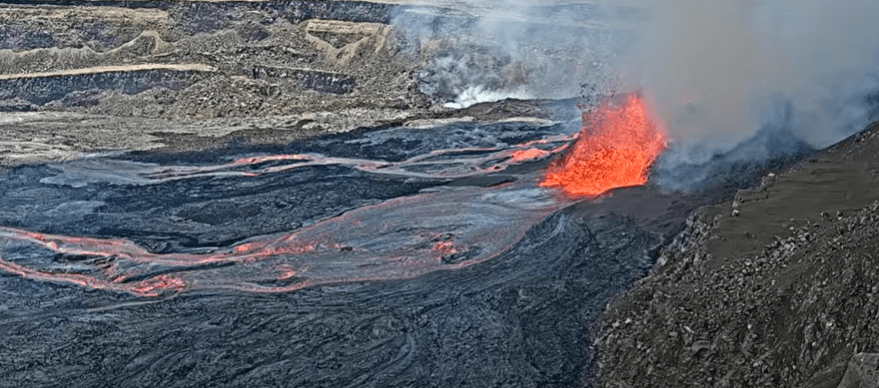KĪLAUEA, Hawaii (KHON2) — Kīlauea stunned visitors and Hawaii Island residents following its 30th episode, which began on Wednesday, Aug. 6, around 1:20 a.m.
The eruption ended abruptly, roughly 12 hours later, just before 1 p.m.
The Hawaiian Volcano Observatory (HVO) reported that a series of unusual earthquakes from Kaluapele, the summit caldera located south of the Halemaʻumaʻu vents, triggered the eruption.
Fountaining and lava flow began at 12:56 a.m. and continued to increase in intensity until 1:20 a.m. HST, where the eruption was confined. This episodic eruption has produced high levels of volcanic gas, which leads to poor air quality and hazardous conditions south of the Volcano.
Kīlauea produced fountains, ranging from 150 to 300 feet, which caused the lava flow to increase and cover about 20 percent of the Halemaʻumaʻu crater floor.
According to the most recent update from the Hawaiian Volcano Observatory, volcanic gas emissions have significantly decreased with lava flowing at a slow and controlled pace. This will allow the lava to gradually cool and solidify over the next few days.
Volcanic hazards near the vent produce strands of Pele’s Hair and other fine volcanic fragments that can travel more than 10 miles downwind. Depending on wind direction and eruption intensity, pumice and other debris have been observed falling on Highway 11, west of Hawaiʻi Volcanoes National Park.
All eruptive activity remains confined to the Halemaʻumaʻu crater within the park, and fortunately, no injuries have been reported.
Check out more news from around Hawaii
There are no signs of change in the East Rift Zone or Southwest Rift Zone. Kīlauea’s Volcano Alert Level and Aviation Color Code remain at WATCH/ORANGE, with all current activity restricted to Hawaiʻi Volcanoes National Park.
